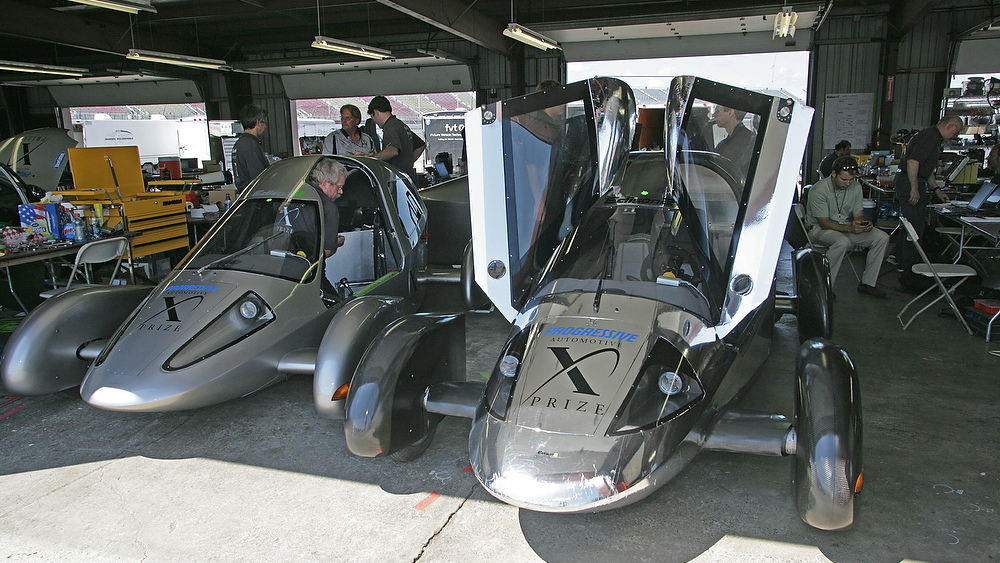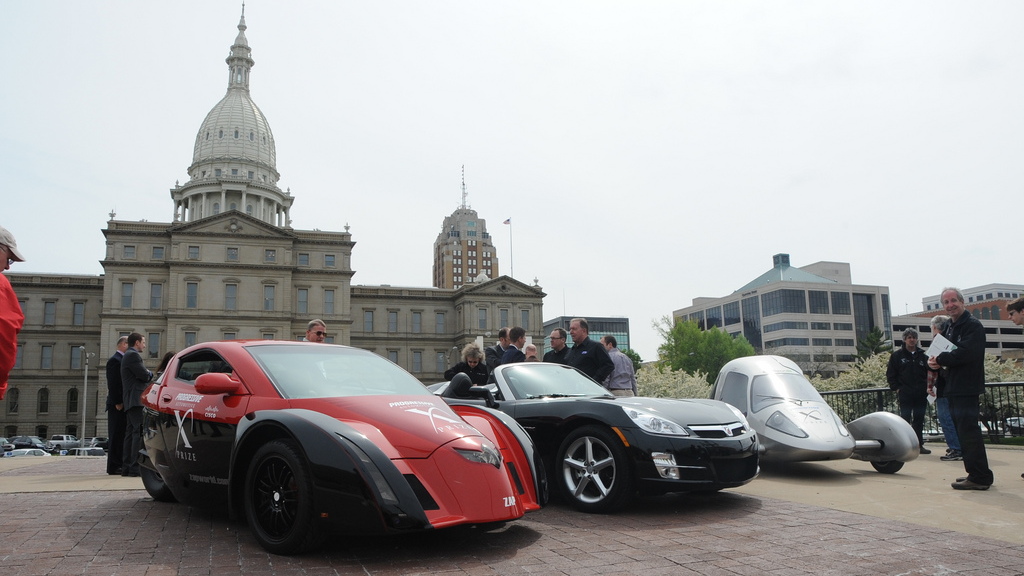After many months of testing, qualifying, and mechanical challenges--not to mention reams of press releases--today the Progressive Automotive X-Prize announced the winners of its three categories, who will split $10 million in prize money.
Both winners in the "alternative" classes for two-passenger vehicles were electric, and our sister site AllCarsElectric.com has full coverage of the pair: the Wave II (side-by-side) from Li-Ion Motors of Mooresville, North Carolina, and the E-Tracer (tandem) from Peraves X-Tracer of Winterthur, Switzerland. Each of those teams takes home $2.5 million.

Peraves E-Tracer, winner of Progressive Automotive X-Prize. Photo: Stefano Paris.

Li-Ion Motors Wave II, Progressive Automotive X-Prize winner.
Here, we focus on the "mainstream" class, which required accommodation for four passengers. The $5 million winner was the Charlottesville, Virginia, team calling itself Edison2, whose "Very Light Car" (# 98) boasted the lowest drag coefficient of any four-wheeled vehicle tested.
Oliver Kuttner, a dealer and racer of European cars, assembled the Edison2 team of eight full-time members plus more than 50 other contributors. It entered no fewer than four Very Light Cars, each with slightly different bodywork on top of the same basis chassis and powertrain.
All weighed under 1,000 pounds and turned in drag coefficients of 0.15, far better than any production car today. The body of the winning vehicle was made entirely of carbon fiber.
As the name indicates, the team focused obsessively on reducing weight in their vehicle, which allowed them to use a smaller displacement engine. The entire vehicle weighed a mere 830 pounds (sans passengers). That's roughly one-third the weight of any other four-passenger car sold today in the United States.
Running on E85 ethanol, their 0.25-liter dual overhead-cam single-cylinder engine generated 40 horsepower--and squeaked them past the 100-MPG minimum required of any competitor to win.
The final result was 102.5 MPGe, or "miles-per-gallon-equivalent," a metric constructed by Auto X Prize organizers after discussions by a working group to find some single way to compare vehicles using a wide variety of powertrains (mechanical and electrical) and energy storage mechanisms (predominantly liquid fuel, hydrogen, and battery packs).
So here's our question: With gasoline at $2.70 per gallon today--and who knows what price in five years--would you be willing to drive a car like this (no amenties, remember) to quadruple your mileage from today's average 25 miles per gallon to 100 miles per gallon?
Why or why not? Leave us your thoughts in the Comments below.


















